The rural coastal Normandy countryside is an area of France famous as the land of Camembert (rich, soft, creamy cheese), Calvados (dry apple brandy), cider, seafood, and an area whose butter & cream based cuisine boasts a proud disdain for most things nouvelle. But it’s also infamous as the location of the D-Day landings of June 6, 1944, some 5 years after the outbreak of World War II & by which stage Hitler had a firm grip on the European continent, much to the ire of the English, French, Americans & Canadians, a.k.a. The Allies, most of whom were taking refuge across the English Channel in England having suffered a series of defeats up to that point. However, the events & sacrifices of D-Day, which saw The Allies storming the Normandy beaches during Operation Overlord, marked the start of the efforts to wrestle the continent back from Nazis oppression – Operation Overlord was to be the biggest military assault in history & it started with the storming of 5 Normandy beaches, code named Utah, Omaha, Gold, Juno & Sword. It also marked the start of the Battle of Normandy which ultimately lead to the liberation of Europe. The rest, as the saying goes, is history.
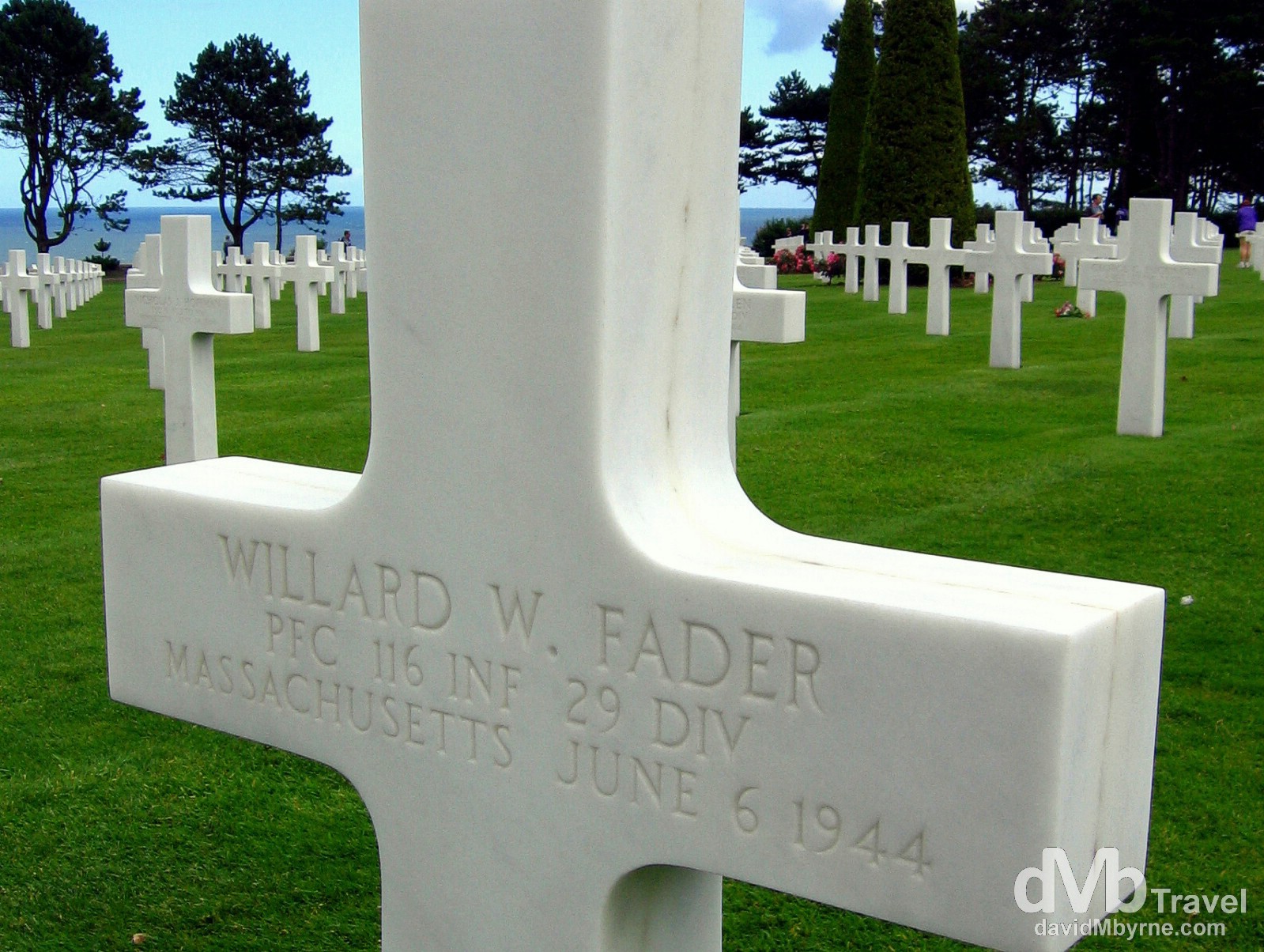
D-Day. June 6, 1944. The American War Cemetery (![]() ), Colleville-sur-Mer, Normandy, France. August 16th 2007.
), Colleville-sur-Mer, Normandy, France. August 16th 2007.
– Adolf Hitler
I spent today been driven through some of the quaint villages dotting the Normandy countryside, moving from one D-Day site or ‘attraction’ to another: Arromanches, where I visited a few museums and saw how the Allies ingeniously built a floating harbour to aid supply to the continent; I viewed German gun placements at Longues-sur-Mer & Pointe Du Hoc; and I visited The American War Cemetery at Colleville-sur-Mer. Today the stretch of the Normandy coastline that played host to the D-Day battles is at peace. It’s idyllic again & the picture-book villages are quiet, surrounded by endless well-farmed hay fields & green fields full of EU-milk-quota dairy cows dotted with splendid centuries-old half-timbered manor houses & barns. But reminders of the past are never too far away – roadside pictures from those dark days in 1944 show the present-day villages as they lay in ruins, during a time when thousands of civilians were killed and nearly six hundred Normandy towns and villages were reduced to rubble. But ultimately the sacrifice was worth it as within a week of the eventual conclusion of the Battle of Normandy Paris was liberated.
Arromanches
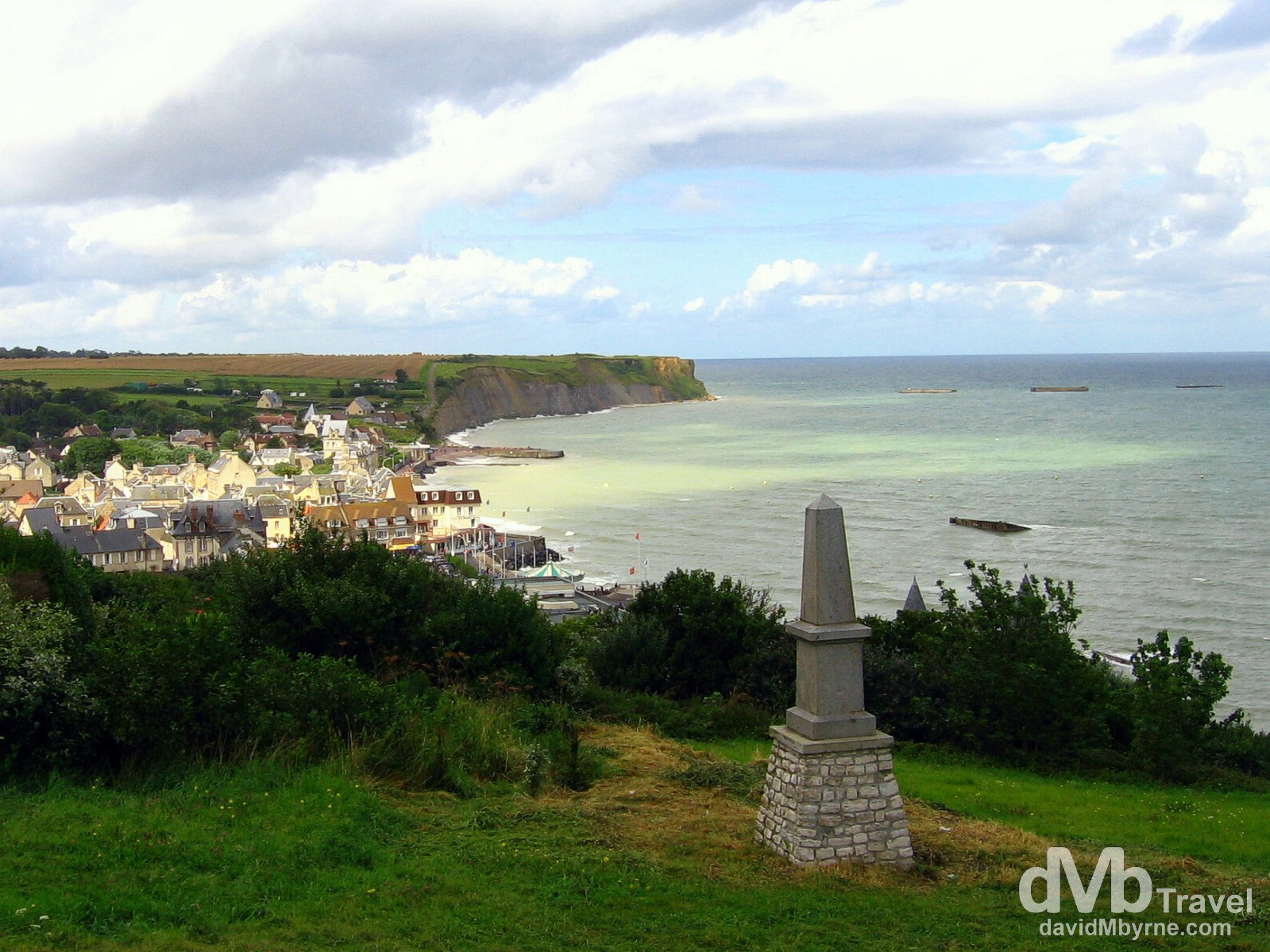
The first stop on my Normandy D-Day tour was at Arromanches, a small seaside village where the construction of a great artificial floating harbour took place. To make it possible to unload cargo without having to capture the heavily defended Channel ports, the Allies established two prefabricated harbours, code-named Mulberry Harbours. They were protected by breakwaters, the remains of which can still be seen in the shallow waters offshore from the hill overlooking the village. Built to last only 6 months, today some 20 of the original 115 breakwaters remain, albeit in an advanced state of decay. The breakwaters were made of concrete, weighed between 3,000 and 6,000 tons and were each about 220 ft long. They were constructed in England and towed across the English Channel before been sunk in position, side by side, to form a 4-mile breakwater one and a half miles off-shore. This enabled the construction of the floating harbour within, none of which remains today. The harbour was the only harbour serving the Allied cause for months after the D-Day invasion (until the port of Antwerp in Belgium was re-opened on November 28, 1944) and was one of the main factors contributing to the liberation of Europe. Even today the deeds of those who created, launched and planned the Mulberry Harbours remain unsurpassed in the annals of British Military Engineering. Arromanches, Normandy, France. August 16th, 2007.
– Winston Churchill, World War II British Prime Minister
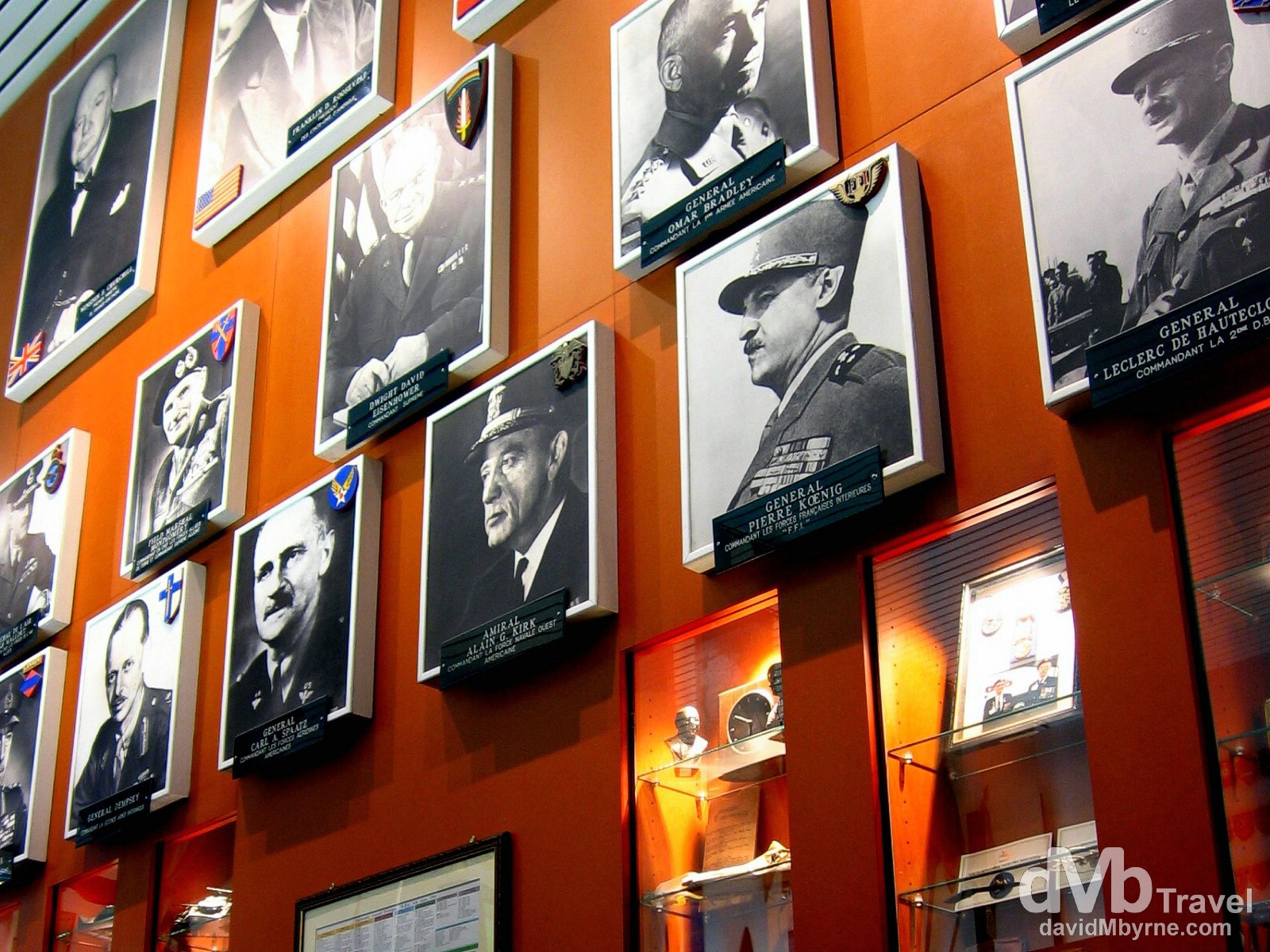
Allied military chiefs on display in the Arromanches Museum, a museum that does a great job detailing the reason for, and the construction of, the Mulberry Harbours. Arromanches, Normandy, France. August 16th 2007 Arromanches, Normandy, France. August 16th, 2007.
Coastline Defenses
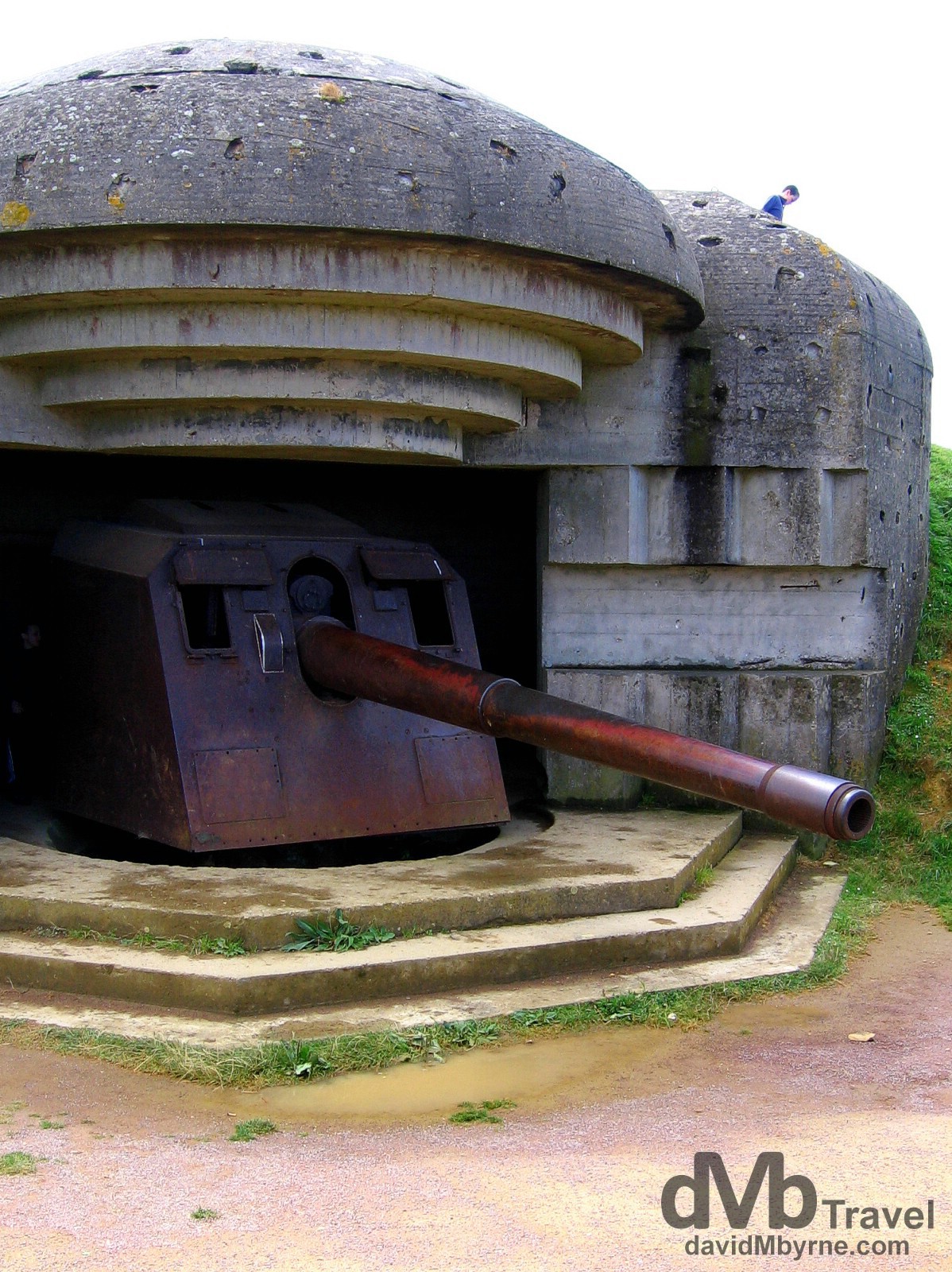
One of the 800 artillery positions constructed by the Germans as part of their Atlantic Wall defending the Normandy coastline. This beast is a 152 mm gun with an effective range of 18 kilometres, meaning it could cover the sea and fire on any vessel trying to come ashore. These guns were typically set back a few hundred metres from the shore and firing coordinates were radioed from forward lookouts right by the shore or on cliff tops overlooking the sea. These worried The Allies so much that attempts to knock them out of action with heavy air bombardment prior to the D-Day landings were extensive – this particular battery at Longues-sur-Mer received 120 tonnes of bombs on the night of June 5, 1944, alone. Unfortunately for the Allies their accuracy wasn’t great and most of the German coastal guns were still operational on D-Day itself. Longues-sur-Mer, Normandy, France. August 16th 2007.
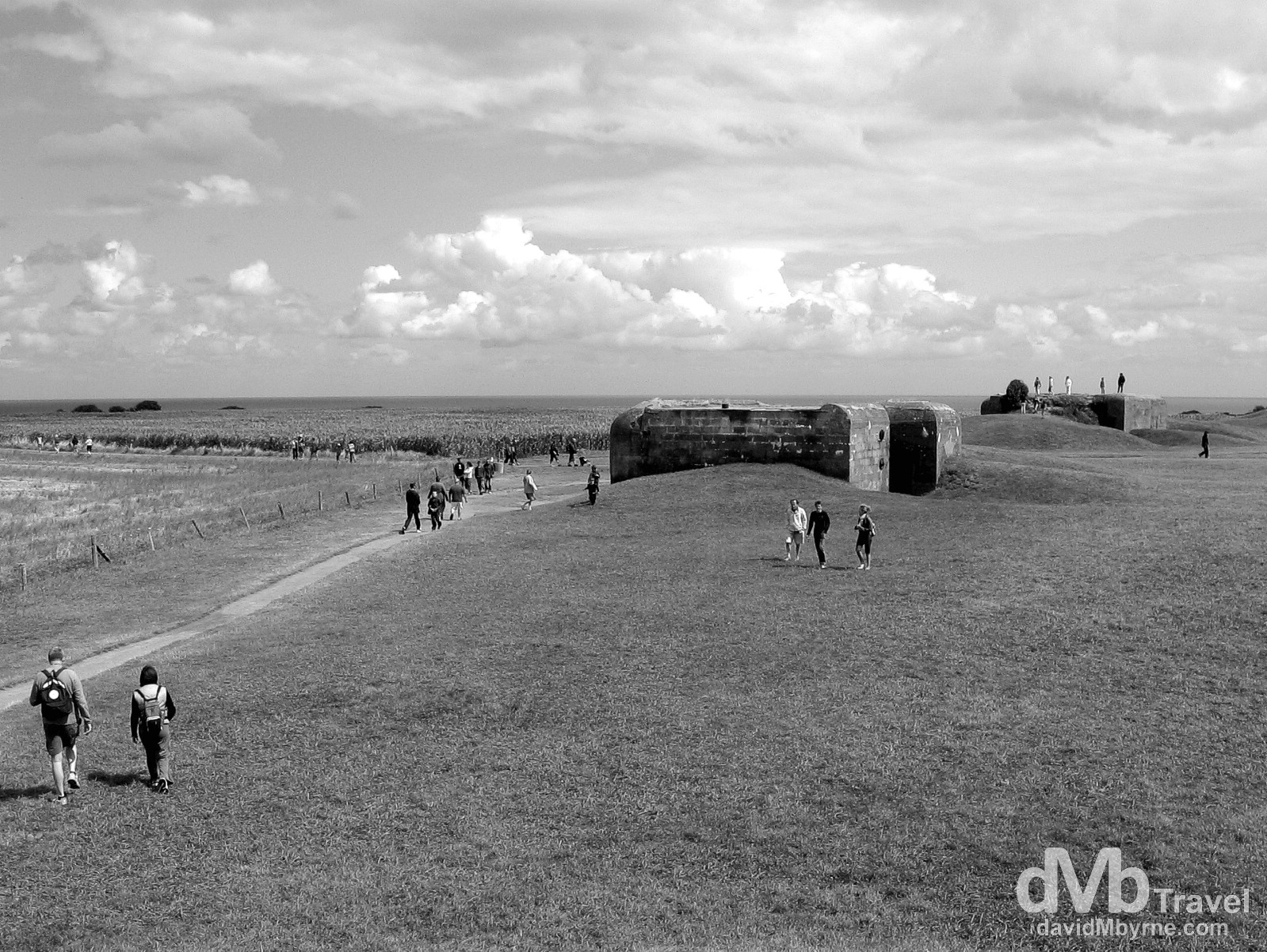
Touring the German coastline battlements in Longues-sur-Mer, Normandy, France. August 16th, 2007.
American War Cemetery
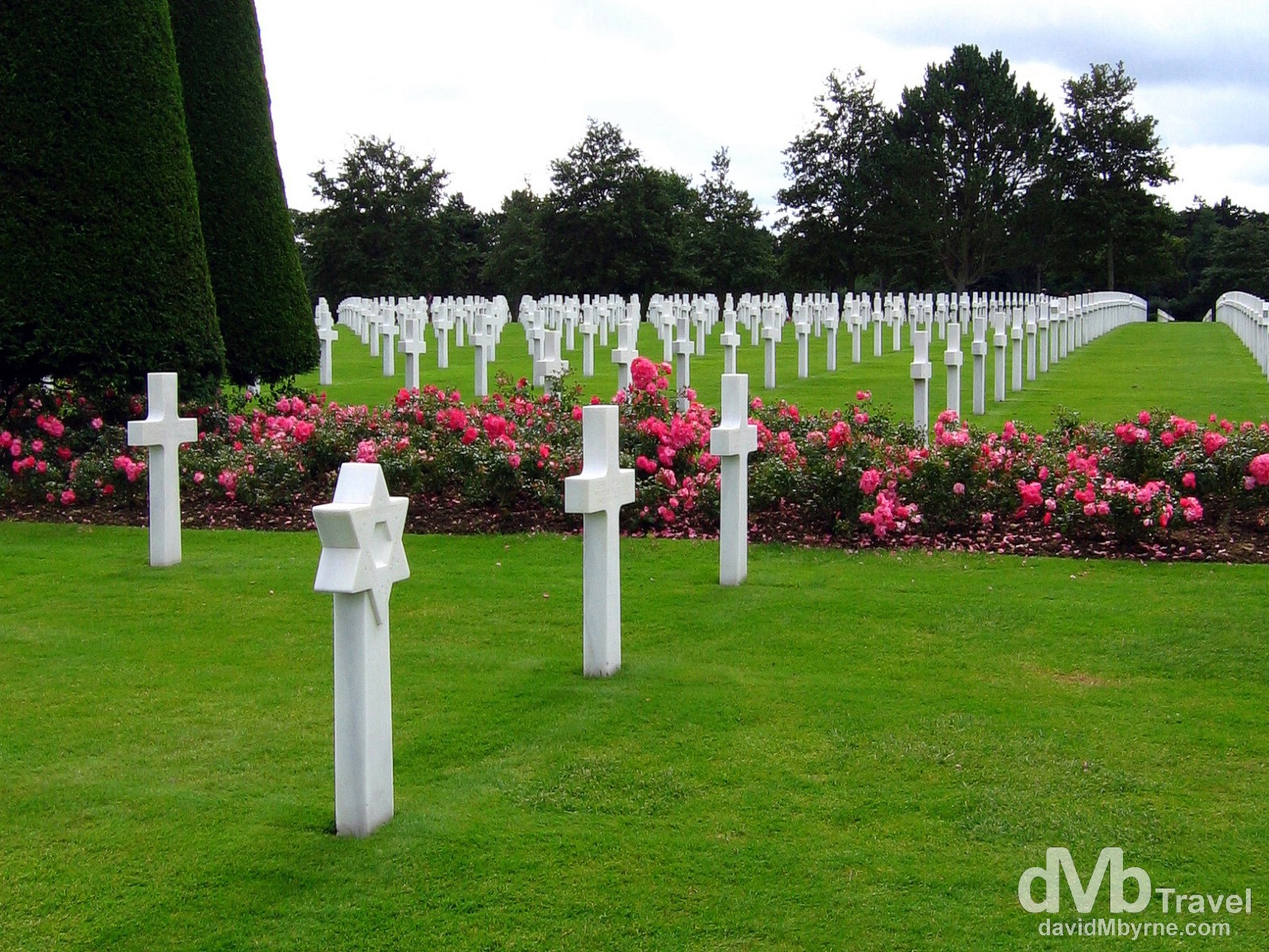
The American War Cemetery is recognisable from the opening scenes of the 1998 WWII movie Saving Private Ryan. It overlooks Omaha Beach, one of the 5 D-Day beaches stormed by the Americans and the beach that saw the most intense fighting and accounted for most of the D-Day causalities. This sombre place is the final resting spot for just under 10,000 soldiers who died in the overall battle of Normandy. They are buried under solid white marble crosses in orderly rows set among the most impeccably manicured lawns I’ve ever seen reminding me that, the world over, the Americans really do a wonderful job honouring their war dead. The site is 720 acres in size, land that was gifted to American by the French government in perpetuity upon the conclusion of the war. American War Cemetery, Colleville-sur-Mer, Normandy, France. August 16th 2007.
Blame Canada
While driving along the Normandy coast from Caen I saw signs for Juno beach, the only one of the 5 D-Day beaches stormed by Canadian troops – the other 4 were assigned to Americans and British troops. The signs pointing to the beach, a beach sadly not on my tour itinerary, had fallen Maple leafs as a decoration. Quite touching, I thought. As an interesting aside, the fact that the D-Day invasion happened here at all and not nearer to Germany was partly a result of the failed Canadian raid on Dieppe, further east of here, in 1942.
Pointe Du Hoc
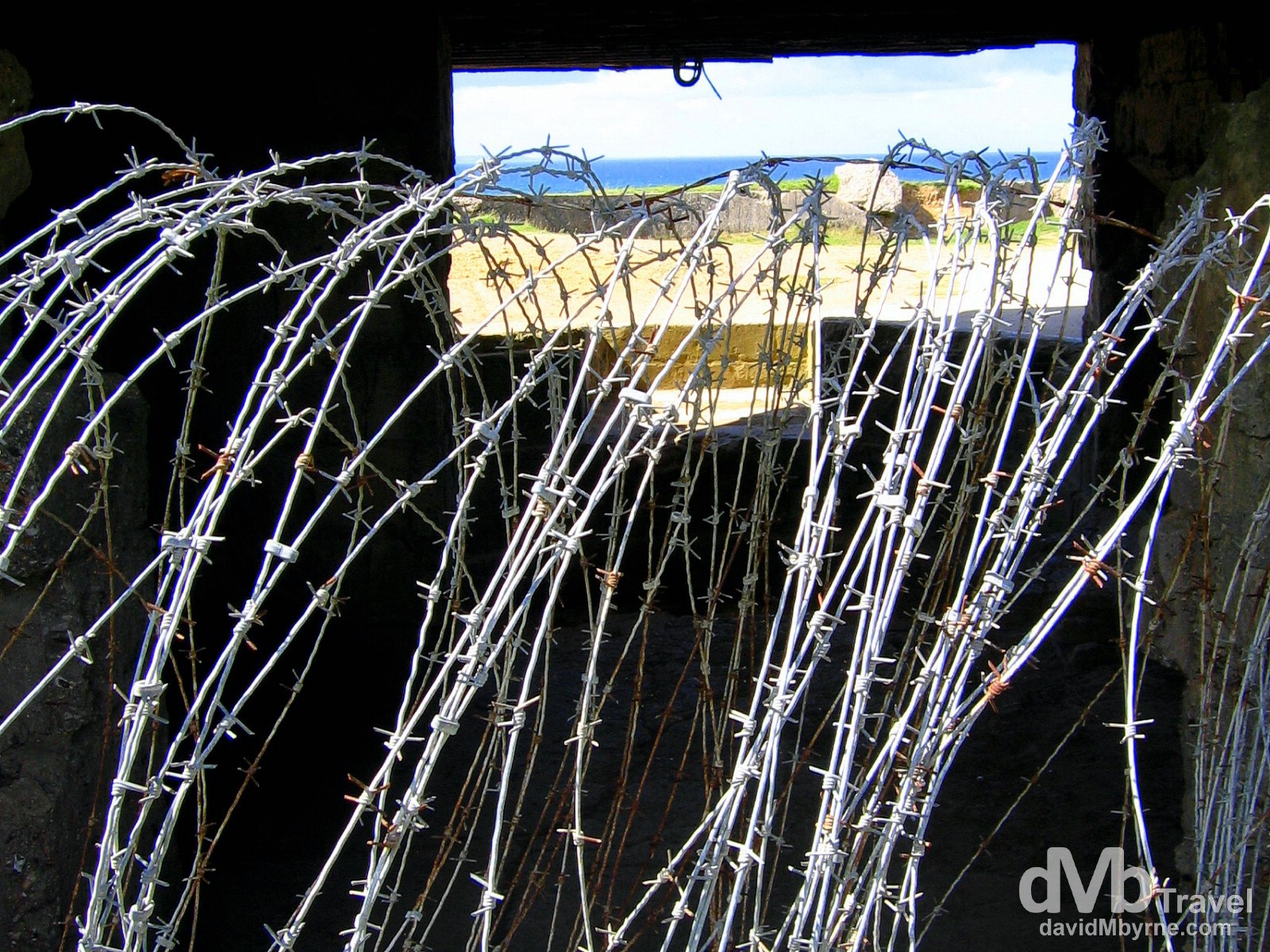
Barbed wire at a German gun battery on Point Du Hoc, a strategic hill overlooking the Normandy coastline. From here, due to its position atop a 30 metre cliff jutting out into the sea, the Germans could pound any passing ships for 20 kilomtres east to west. For this reason special significance was put on the capture of this battery on D-Day. The fierce fighting between the Germans and the 225-man Ranger unit sent to capture this battery is now stuff of American military legend. The Rangers first had to scale the cliff, something they did under strong enemy fire with the aid of specially designed equipment. The Rangers eventually succeeded in taking the battery, albeit with the loss of some 120 men. The remaining 90 Rangers then managed to hold out for over two days until backup eventually arrived. But it was a bittersweet victory for the Allies; the Germans had, days earlier, removed the battery guns and replaced them with wooden beams to deceive the English reconnaissance planes. Pointe Du Hoc, Omaha Beach, Normandy, France. August, 16th 2007.
– Ronald Reagan, US President, June 6th, 1984
______________________________________________________________________
